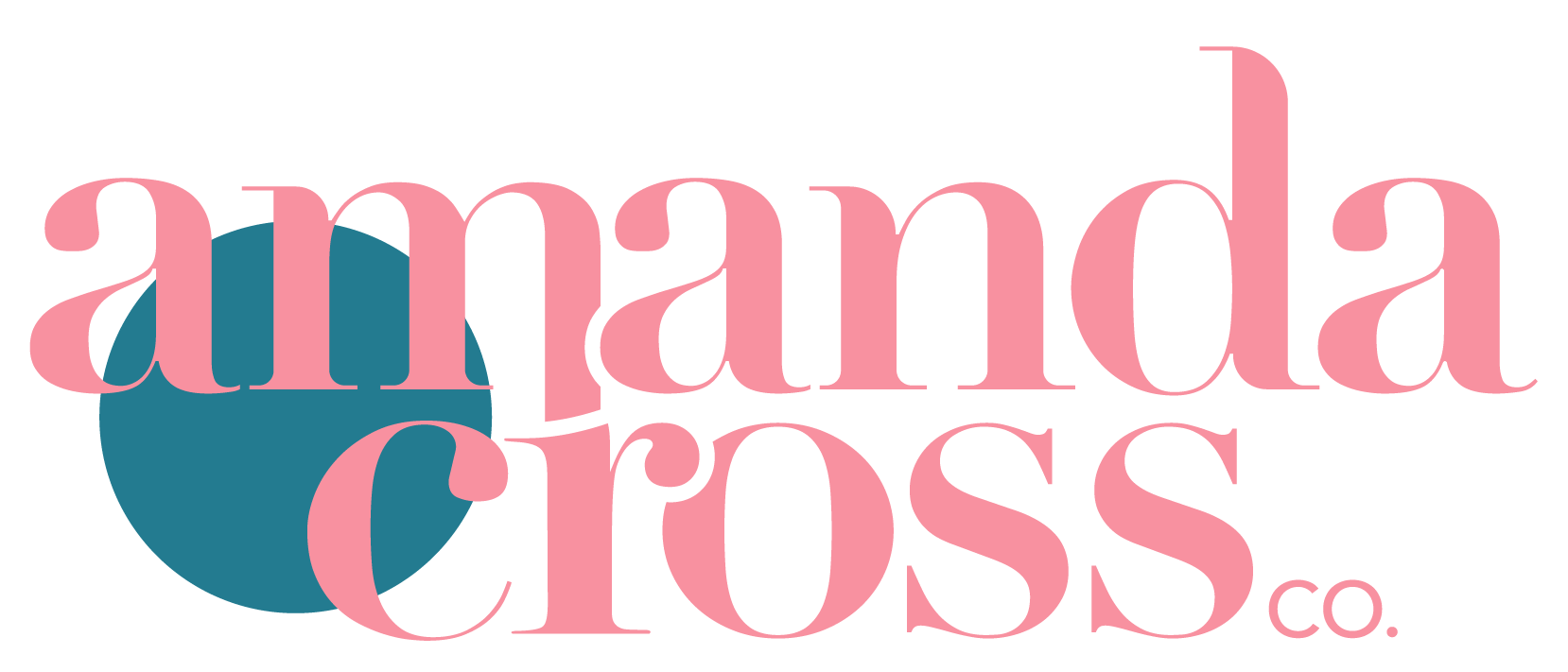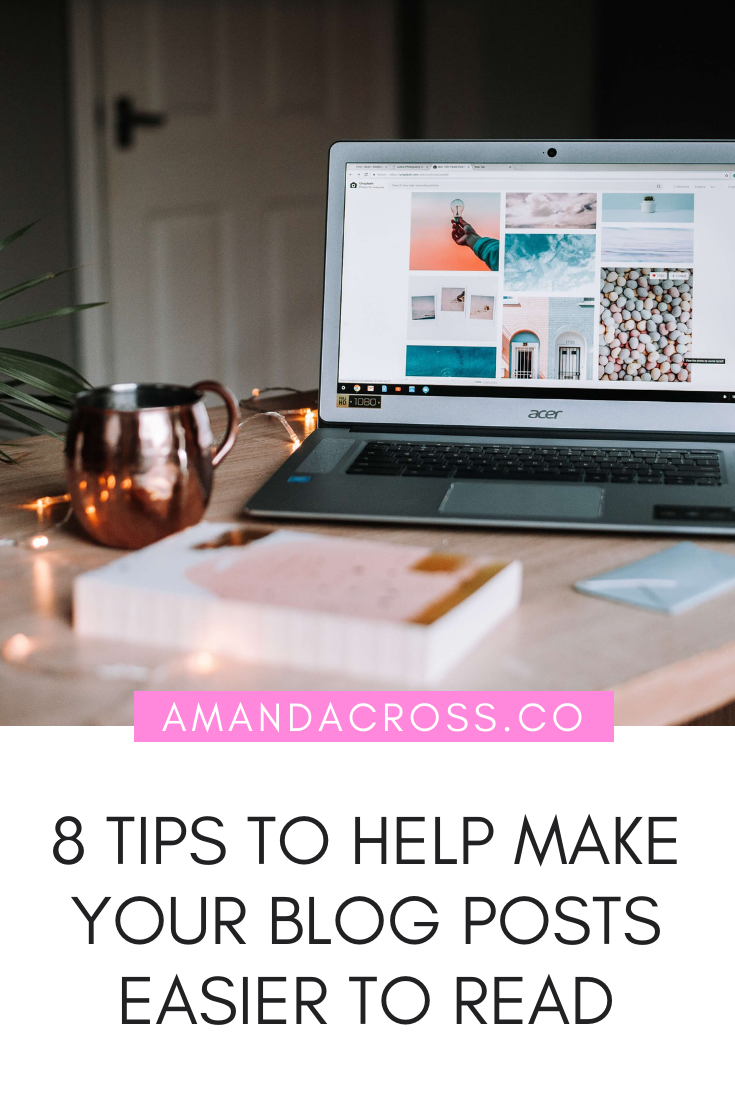8 Tips To Help Make Your Blog Posts Easier To Read
I was checking out a blog post the other day that had an informative title. I was excited to dig in, but then I saw a pretty horrific blog layout. It made me almost immediately close out of the page. I couldn't force myself to read it. From that point on, I decided to create this blog post all about how to make your blog posts easier to read. Writing a blog post takes more work than you think. This changes depending on the niche and person, but likely you'll need the following eight tips to create blog posts that are easy to read for your audience. I hope that my insight helps you create content that you can be proud of.
1. Use Enticing Titles, Headings, And Subheadings
Your first impression is critical if you'd like to make your blog posts easier to read.
You want to make your blog posts clickable. You also want to keep people interested throughout your blog post.
For this reason, I encourage you to use titles that grab your reader’s attention and get engagement.
I love using Sharethrough's Headline Analyzer to create stellar titles. This site has been featured before in a post I did all about the tools I use as a freelance writer. I still run all my headlines through this tool.
Here are some tips for creating a stellar headline:
Use the news to your advantage by including current events in your headline.
Get to the point quickly, sites like Google or Facebook will only show so much of your title.
Make it a listicle and include the number of tips your readers will get if they click through.
Add an adjective like simple, beautiful, catchy, delightful, etc. to make your headline more clickable.
The Importance Of Headings & Subheadings
After you've created the perfect title, you need to keep your readers attention throughout the article. Headings and subheadings help you break up your text and keep your reader interested throughout the post. Headings and subheadings can also help give your post structure and help your audience follow your train of thought.
When most readers check out a new blog post, they don't read it right away. First, they scan your blog, paying particular attention to the headings that you use. Sure, a reader could just read the headings, get the jest of what you are writing about, and leave but what is the alternative? You could also push away any readers because you don't use headings, then none of your text will be read. I would honestly rather a reader just read the headings of my articles than readers who click off my blog right away because they don't know where to begin with my article.
2. Embrace White Space
If you want to make your blog posts easier to read you must embrace white space.
Why do you need to embrace space?
Simple. People hate reading large chunks of text. When I see a post that is essentially one long block of writing, I immediately want to exit out of the page.
You don't need every square inch of your blog to be filled with text.
Here are some easy ways to embrace white space:
Make sure your blog has a white or light background.
Use bullet points effectively.
Vary sentence and paragraph length.
Space your sentences correctly.
3. Make Sure Your Text Is Large Enough
I have pretty bad eyesight.
Yes, I can always zoom in on your page, if your font is small, but why should I?
I just came to your page, and I honestly have no idea who you are. You haven't proven to me that you are worth my time yet.
Instead, I will press the exit button on your blog.
You should have at least a size 11-12 font as your body/paragraph font size. This is usually large enough for most people to read without having to enlarge your text. Don't be afraid to get into the 13-15 territory for your body font size either, though.
You should never go too large, though. I wouldn't go above 16 for a body/paragraph font. I feel like numbers like 17+ are best reserved for headings and subheadings.
4. Write Short, Easy To Read Sentences
Readability is vital for any blog you produce. Instead of writing long, complex sentences, try sentences that are short and to the point. You should try to keep most of your sentences under twenty words per sentence.
By varying up your sentence and paragraph lengths, you can assure that you'll make your blog posts easier to read.
If you are unsure about your blog's readability, run your posts through services like Grammarly or Hemmingway. This will clear up any confusion and help you put your best blogging foot forward.
5. Avoid Jargon If You Are Writing To A Nontechnical Audience
Now, this doesn't mean that you can't use jargon in your blog posts.
For example, if you are trying to attract an academic audience and people who all have PhDs, jargon would be acceptable.
It's all about identifying your ideal audience and what understanding you want them to have of jargon.
Keeping in line with the academic audience, say you want to reach that audience, but instead you want to reach future academics. These are students in college, but they are still learning to grasp the jargon of their field. In this case, you probably want to go for easier to understand language.
Be clear about your expectations, but also realize once you set a limit on who you are trying to attract through the use of jargon, it makes your site much more niche. If you are technical, you can't expect to get a lot of beginner readers. Instead, you will be pigeonholed to communicating with and selling to experts and advanced-level individuals/companies. Is that who you want to sell to? If so, keep it going! If not, avoid the jargon.
6. Don't Be Afraid Of Contractions
This is something that I've been struggling with lately because of how much I've been taught to spell out words in academia. I often switch between using contractions and not using them.
People use contractions.
It may not be the best for your brand, but ultimately, people relate to it.
I don't know a single person who doesn't use contractions in their normal day-to-day lives. It makes conversation easier, and it can make writing blog posts easier too.
Adding contractions is a great way to keep your copy conversational and friendly.
7. Provide Actionable Advice
You never want your audience to ask the following questions:
What did I just read?
Why did I just read that?
Can I get the time back I've spent from reading that?
Your content needs to take things to the next level by providing actionable advice that your readers can use to succeed.
One of the easiest ways to do this is by creating a listicle. Your advice has to be actionable when following a listicle format because you are essentially creating an outline for them to follow. When you create a piece called "30 Ways To Take Your Health Into Your Own Hands" you have to provide 30 actionable ways for your readers to take their health into their hands.
8. Use Pictures & Charts To Break Up Text
I am all about using pictures and charts to break up your text. This goes back to what we talked about in point #2; no one likes massive walls of text. Embracing white spice is a great way to get rid of those big walls of writing, and so is utilizing pictures and charts.
Website Alert: Use Unsplash To Get Gorgeous, Free Images
One of my favorite places as of late to get images is a website called Unsplash. I've been avoiding this site, but one of my blogging friends posted that she used Unsplash to upload some of her pictures. I wanted to see what photographs she had on the website, and I realized that I needed to jump on the Unsplash train immediately.
So, what's so great about Unsplash? Photographers around the world take all the images and they are all free to use with or without giving credit to the original photographer. Unsplash is excellent for any website or blog who wants to produce content online. You can use the gorgeous imagery from photographers in your blog posts, and you can even use them for commercial projects too. You may want to consider giving credit when possible, especially for commercial projects.
Plugin Alert: Use Smush To Reduce Image Load Time
We all know the importance of using pictures, but could pictures also be slowing your site down? Likely your images are contributing to a slow site, and that's no fun at all. Smush is a great plug-in that can drastically reduce your image file sizes so that you can deliver a speedier website. Pictures help your site look better, so you need to make sure they don't slow your site down in the process.
Smush is a freemium plugin with some great options on the free plan. On the free plan, you are limited in how many images you can "smush" at once. You can do a ton of pictures at once if you pay for the premium version of the plugin. For this website, the free version worked just fine for me because I don't have that many articles and pictures on the site. If you have a ton of photos on your website, you may want to spring for the paid version of this plugin.
Conclusion: You Are Ready To Make Your Blog Posts Easier To Read
Today, on the blog, we talked about eight ways to make your blog posts easier to read. I know that if you follow these eight steps, your blog posts will be bigger and better than ever before. Writing can be hard, though, so don't hesitate to reach out to me if you'd rather hire out the writing process! I'd love to chat with you about your project needs! Overall, though, I hope you got something out of this blog post. Create content that will resonate with your audience!





